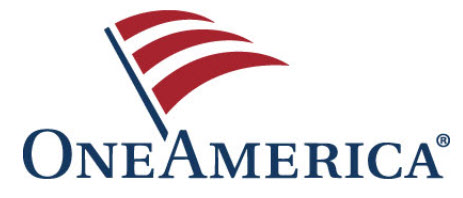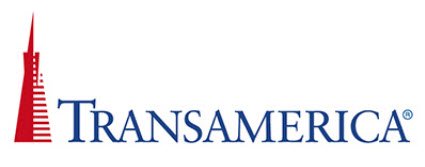The best insurance for business Owners is . . .
the business, itself. So, why not start with yours?
Case and Point: Check out this business owner's testimonial to the power of having a pension plan.
Adamsson Associates are uniquely positioned to:
 Limit Threats
Limit Threats Leverage Opportunities
Leverage Opportunities Leave a Legacy
Leave a Legacyfor themselves, by helping other business owners do the same.
"Planning's the insurance money cannot buy."
J L Adamsson, Flynancial Times, January Edition, 2024.
As an Adamsson Associate, you are in business as an independent project management professional specializing in risk management for the business owner.
Like you, your client sees a business need to plan for what they can, and prepare for what they can't. And, perhaps, not just for themselves, but for their executives, and for their employees, as well.
By initiating, delivering, executing, and monitoring:
- lifetime income planning,
- long term care planning, and
- legacy planning for your business,
you are ready to help a business owner who is looking to do the same for theirs.
Q: Why would a business owner buy long term care insurance,
when the business could buy it for them?

Yours, with our thanks for answering 2 quick LTC questions.
Planning for the unplanned changes that the rest of life can bring . . . now, that requires some tough questions that need to be answered:

"What happens if I live, too long? "
"What happens if I die, too soon?"
"What happens if I lose my income to:
these are the hard questions you have asked yourself, Adamsson Associate, and that you must ask before Appropriately recommending insurance for business Owners.
To re-iterate, whether current or aspiring, this website is intended to encourage, inform, and guide business owners to entrepreneurial growth and success.
Not all risk is bad, as you well know. Certainly threats of financial loss are negative risks, but positive risks are what we call opportunity. That's why we love to meet entrepreneurs who are brand new to business ownership.
Unfortunately, insurance for business owners is often the last thing on the mind of a start-up entrepreneur.
For the reader who, perhaps, is just starting a business and has never really considered risk management as a field of interest
What follows here is just a little higher level perspective on the language and the culture of project risk management, just in case you're curious and might be considering it as a career opportunity you've never considered, before.
overview of risk management within the context of enterprise, portfolio, program, and project management.
Risk is inherent: Every organizational activity when it comes to managing portfolios, programs, and projects, involves risk. Recognizing and proactively
managing these risks is crucial for achieving strategic objectives and
maximizing value creation.
Systematic approach is essential: A structured and iterative planning approach to risk
management, encompasses:
- risk identification,
- risk analysis,
- risk responses
- monitoring
- re-iterating
Tailoring and scaling are crucial: Risk management processes should be tailored
and scaled to meet the specific characteristics of the endeavor, considering
factors like available resources, organizational maturity, and risk appetite.
Integration is key: Successful risk management requires seamless integration
with other organizational processes, including strategic planning, governance,
stakeholder engagement, and performance management.
Accountability and responsibility are shared: Risk management is a shared
responsibility, requiring active participation and collaboration from all
stakeholders, including executives, managers, team members, and external
partners.
Risk Management across Domains:
Enterprise: risk management is an approach for identifying and forecasting major risks confronting an organization, aligning risk management with organizational culture, capability, and strategy.
Portfolio: Portfolio risk management aims to optimize the mix of components to
balance risk and reward, ensuring alignment with organizational strategy and
maximizing value delivery.
Program: Program risk management focuses on managing risks that could impact
the realization of program benefits, ensuring effective integration of
component projects and achieving strategic alignment.
Project: Project risk management aims to minimize the probability and impact of
negative risks while maximizing the probability and impact of positive risks,
ensuring successful project delivery within defined constraints.
Key Terminology of Risk Management
Risk definition: A risk is an uncertain event or condition that, if it occurs, has a positive or negative effect on one or more objectives.
Risk attitude: An organization's or individual's disposition toward uncertainty, ranging from risk-averse to risk-seeking, influencing how risks are assessed and managed.
Risk appetite: The degree of uncertainty an organization or individual is willing to accept in anticipation of a reward, guiding risk management decisions and parameters.
Risk threshold: A measure of acceptable variation around an objective, reflecting risk appetite and serving as a key element in defining risk strategy and escalation paths.
Key Concepts of Risk Management
Uncertainty: The lack of complete knowledge or predictability about future events or outcomes, inherent in portfolios, programs, and projects. Insurance for business owners is the proactive way to deal with uncertainty.
Ambiguity: The state of having multiple possible interpretations or meanings, making it challenging to identify and assess risks accurately.
Threat: A risk with a negative effect on one or more objectives, requiring proactive management to mitigate potential negative impacts.
Opportunity: A risk with a positive effect on one or more objectives, requiring proactive management to exploit potential benefits and enhance value creation.
In Summary:
Effective risk management is crucial for achieving organizational success in today's complex and uncertain business environment. By adopting a structured and integrated approach, organizations can proactively identify, analyze, and respond to risks, maximizing opportunities while mitigating potential threats. This concise overview provides a foundation for understanding key concepts and best practices in risk management, enabling organizations to navigate uncertainty and achieve their strategic objectives.
An extended care event . . .
is just one threat that an un-planned change of business ownership can bring. And, LTC insurance is just one solution. But, wouldn't you agree,
strategically transferring that risk with insurance for business owners is literally spending pennies to buy someone elses dollars?
Watch this business owner's








